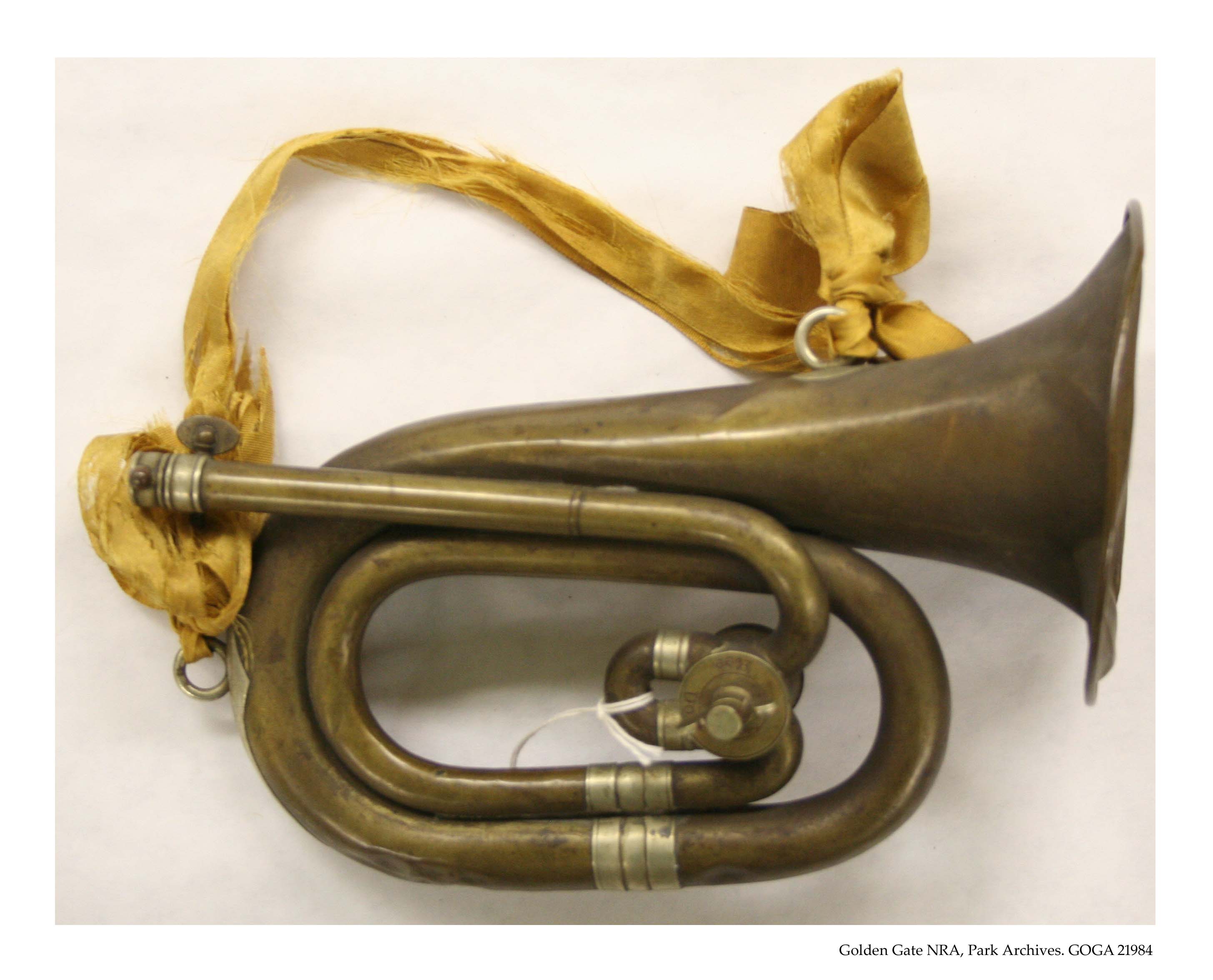The bugle has always had a place in the military. Bugles are traditionally sounded to assemble troops or give orders. The original bugle's use dates back to the Roman Empire. The term "bugle" actually comes from the word "buculus," Latin for bullock (a castrated bull). The design of the horn has, for the most part, remained the same. While modern bugles, such as the one pictured below, are made from brass and other metals, they were originally constructed from animal horns. Modern bugles may have up to four valves, but historically the instruments have no valves or other pitch altering devices. Bugles are shaped similar to trumpets in a coiled, gradually tapered figure with a mouth piece at one end and the bell at the other.

The bugle int he GGNRA's collection dates to the Spanish-American War. The instrument was captured by U.S. Troops in the battle of Manila in the Philippines and brought back to the United States as a trophy. The mouth piece is broken off and the brass has been severely dented, possibly from its use in a battle. San Francisco's Presidio was a major embarkation point for troops during the Spanish-American War and subsequent Philippine-American War; as a result the Museum Program at Golden Gate National Recreation Area have many artifacts pertaining to the United State's involvement in the Philippines.

